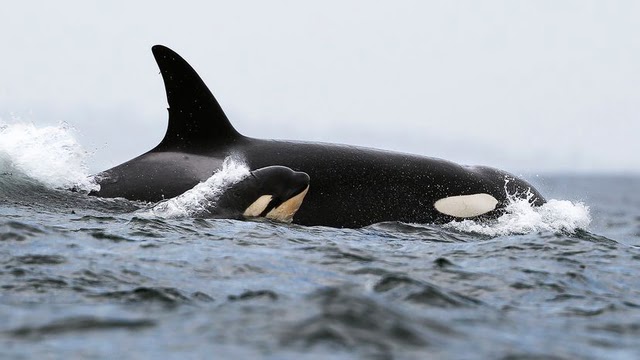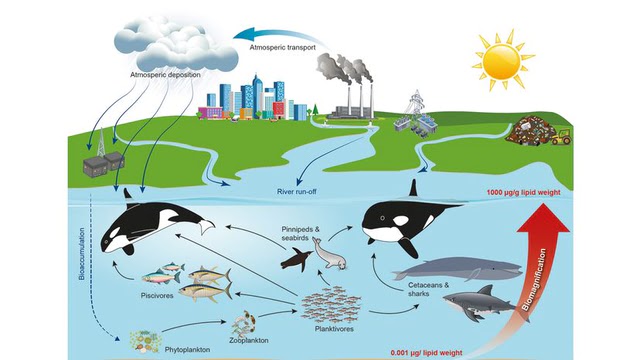Quck answer
PCBs, or polychlorinated biphenyls, are toxic chemicals that have been found in the bodies of killer whales. These chemicals were widely used in electrical equipment, but were banned in the 1970s due to their harmful effects on the environment and human health. Despite the ban, PCBs still persist in the environment and accumulate in the food chain, leading to high levels in top predators such as killer whales. PCBs can damage the immune, reproductive, and nervous systems of whales, and can even cause death. To protect these magnificent creatures, it is important to continue efforts to reduce PCB contamination and limit their release into the environment.
Wild Animals

A killer whale calf swims next to its mother in Monterey Bay, California. Chase Dekker Wild-Life Images/Getty Images
The news is not good: polychlorinated biphenyls (PCBs) are endangering killer whales. PCBs have been illegal in the United States since 1979, but they continue to accumulate in orcas globally.
A recent study published in Science on September 27, 2018, reveals that PCBs pose a long-term threat to half of the world’s orca population. Researchers from Aarhus University in Denmark, along with scientists at the Zoological Society of London and the University of Copenhagen, studied data from the blubber of 351 orcas, as well as their reproductive systems, to forecast the effect of PCBs on population size in the next century. The outlook is grim.
Orcas’ fatty tissues are contaminated with PCBs when they feed on contaminated animals. As orcas are at the top of the food chain, PCBs become concentrated in their blubber and are passed on from mother to calf. Populations of orcas in areas such as Japan, Brazil, the Strait of Gibraltar, and the United Kingdom, where PCBs are most concentrated, could completely collapse within 30 to 50 years. Polar oceans that are less polluted with PCBs have slightly better prospects.
“We know that PCBs deform the reproductive organs of animals such as polar bears. It was therefore only natural to examine the impact of PCBs on the scarce populations of killer whales around the world,” said co-author and initiator of the study Professor Rune Dietz, who works in the Department of Bioscience and Arctic Research Centre at Aarhus University.
The researchers determined that more than 50% of the orca population is in danger due to PCBs. They used models to predict the effects of PCBs on the orcas’ immune systems, mortality rates, and how many offspring they could have over 100 years.

PCBs enter the whale’s food chain via phytoplankton, which are then consumed by zooplankton, which is consumed by smaller fish, etc. The chemicals increase in each link of the food chain, which means the killer whales feed on large animals with high concentrations of PCBs.
Aarhus University
“The findings are surprising. We see that over half of the studied killer whales populations around the globe are severely affected by PCBs,” said postdoc Jean-Pierre Desforges from Aarhus University, who led the investigations.
This latest research confirms what we already knew: in a 2007 study, mathematical models predicted that orcas, “the most PCB-contaminated creatures on Earth,” according to the American Chemical Society, would be at risk until at least 2030 and perhaps as long as 2063. An earlier study from 2000 found that “transient” whales in the Pacific Northwest, which move a lot and eat more marine mammals, such as sea lions, have higher concentrations of PCBs than “resident” populations that eat more fish.
Killer whales face many challenges, of which PCBs are just one. They also have to cope with noise and pollution from shipping traffic, as well as declining populations of healthy wild salmon. Humans can adjust shipping lanes and eat sustainably harvested salmon to help. The EPA also recommends properly disposing of medicines to keep those chemicals out of the waters and away from wildlife.
Fascinating Facts
What’s the reason for using PCBs? They’re effective insulators and nonflammable. PCBs have been utilized in place of mineral oil for cooling industrial transformers and capacitors, as well as in electrical components and cables since the early 1900s. Additionally, they’ve been used in the production of plastics and pesticides. However, we’ve been aware of their harmful effects since the 1930s, and they’re now considered a possible carcinogen for humans.
FAQ
1. What are PCBs?
PCBs, or polychlorinated biphenyls, are a group of man-made chemicals that were widely used in industrial applications from the 1930s to the 1970s. They were often used as coolants and lubricants in electrical equipment, such as transformers and capacitors.
2. How do PCBs get into the environment?
PCBs can enter the environment in a number of ways, including through improper disposal of products that contain them, leaks or spills during manufacturing, and releases from landfills or incinerators. Once in the environment, PCBs can persist for decades and can accumulate in the food chain.
3. What are the health effects of PCB exposure?
PCBs are known to be toxic to both humans and animals. Exposure to PCBs has been linked to a range of health effects, including developmental and neurological problems, reproductive issues, and cancer.
4. How are PCBs affecting killer whales?
PCBs are having a particularly devastating effect on killer whales, also known as orcas. These animals are at the top of the food chain and therefore have the highest concentrations of PCBs in their bodies. This can lead to a range of health problems, including immune system dysfunction, reproductive issues, and even death.
5. How are killer whales exposed to PCBs?
Killer whales are exposed to PCBs through their diet. They primarily eat fish, which can contain high levels of PCBs. Additionally, PCBs can accumulate in the blubber of marine mammals, which are also a part of the orcas’ diet.
6. What is being done to address the PCB problem?
Efforts are underway to reduce the amount of PCBs in the environment. This includes stricter regulations on the use and disposal of PCB-containing products, as well as cleanup efforts at contaminated sites. However, it will take many years for the effects of these efforts to be fully realized.
7. Can PCB-contaminated fish be eaten?
Consuming fish that contain PCBs can be harmful to human health. While cooking can help to reduce the amount of PCBs in fish, it is still recommended that people limit their consumption of fish that are known to contain high levels of PCBs.
8. How are PCBs affecting other marine animals?
PCBs are affecting a wide range of marine animals, including seals, sea lions, and dolphins. Like killer whales, these animals are at the top of the food chain and therefore have the highest concentrations of PCBs in their bodies.
9. What can be done to protect marine animals from PCBs?
Reducing the amount of PCBs in the environment is the best way to protect marine animals from their harmful effects. This can be accomplished through a combination of stricter regulations, cleanup efforts, and public education about the dangers of PCBs.
10. Are PCBs still being used today?
No, PCBs have been banned in most countries since the 1970s. However, they continue to be a problem due to their persistent nature and the fact that they were widely used for so many years.
11. How can individuals help to reduce PCB contamination?
There are several things that individuals can do to help reduce PCB contamination. These include properly disposing of electronic equipment, reducing the use of disposable products, and supporting efforts to reduce the amount of PCBs in the environment.





Leave a Reply